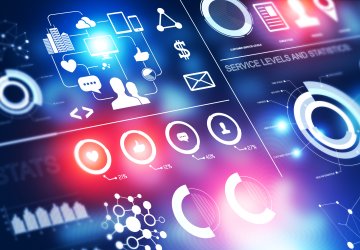
For more than a decade the utility industry has been in transition. The expansive introduction and implementation of smart meters that report consumption directly back to the utility company, eliminating the need for onsite meter reading, is now empowering utilities to think bigger than ever before. And we’re listening, because it poses big opportunities for all industries.
Smart meter, smartphone, smart building—what does “smart” mean in this context?
Typically, for a meter to be considered “smart,” it must be connected to the internet and utility system, and have the ability to continuously report data about its usage. I agree with my colleague that this should not really be considered “smart.” They should just be called self-reporting meters.
For example, have you ever wondered why a turbine isn’t moving even though you know it’s windy outside? A turbine is constantly reporting on the level of wind it captures. Depending on the intensity, a turbine can be shut down to avoid damage. It can also adapt and turn off depending on the quantity of generated power needed at the time. There are also connected parking garages that use sensors and lights to help guide cars to available spots. In these cases, are the connected, self-reporting meters smart? Or are we just able to make smarter estimations and take faster action because of the data they are providing?
Reporting data usage on their own is certainly “smart” when compared to traditional meters, and they’re definitely convenient and useful in the sense that it’s no longer necessary to send meter readers out in inclement weather.
Smart systems
As we move past the term “smart meter” and begin referring to smart devices we generally mean a bit more. The term “smart” begins to imply more than just a connection and ability to collect and report data; it begins to describe the capability of interpreting and adapting to data.
So, if a device can collect usage data, a smart device would also be able to recognise usage patterns and adapt its functioning accordingly. One might describe this process as learning, but “learning” is a human concept. How do we apply that to meters and machines?
Your smartphone also has the ability to collect vast amounts of data, including recording every place it goes; map and location applications can adapt to that information. When search engines and map applications begin to suggest locations or fill in the blanks as you’re typing your queries, you’re benefiting from your smartphone collecting data, recognising usage patterns, and adapting to them.
When we delve into the interpretation of data that our smart devices are doing, we’re moving away from the smart device itself and into the software and applications that allow for the interpretation of data. This is where things get really interesting for all industries.
In the case of utility meters, it isn’t so much the meters that have become smart: It’s the utility system, the network of production and consumption that recognises demand, turns production equipment on and off, makes storage decisions, adjusts availability and price, etc.
How far do we want to go?
It’s a picture only beginning to emerge. If all meters and devices aren’t recognising patterns in the data they are collecting now, they will be soon. Typically, innovation hits consumers and households first, and there are many examples of innovation with devices that can interpret and adapt to data. There are connected light bulbs that allow you to create personal lighting environments through settings and colours that you can control from your smartphone, such as Philips Hue Lighting. There are thermostats, like the Nest Thermostat that can sense movement and recognise patterns in your energy usage and adjust temperature on its own.
There are also interesting business concepts emerging and being tested as we move toward more connected buildings and cities. It has recently been suggested that streetlights may become the second most valuable urban assets (after buildings) because their location, regular spacing, etc., make them ideal collectors of information about pedestrian and vehicular traffic, movement patterns, street population density, etc. As with all new technology, when we open the door to automating functions that were previously manual, the possibilities are endless on the other side.






















